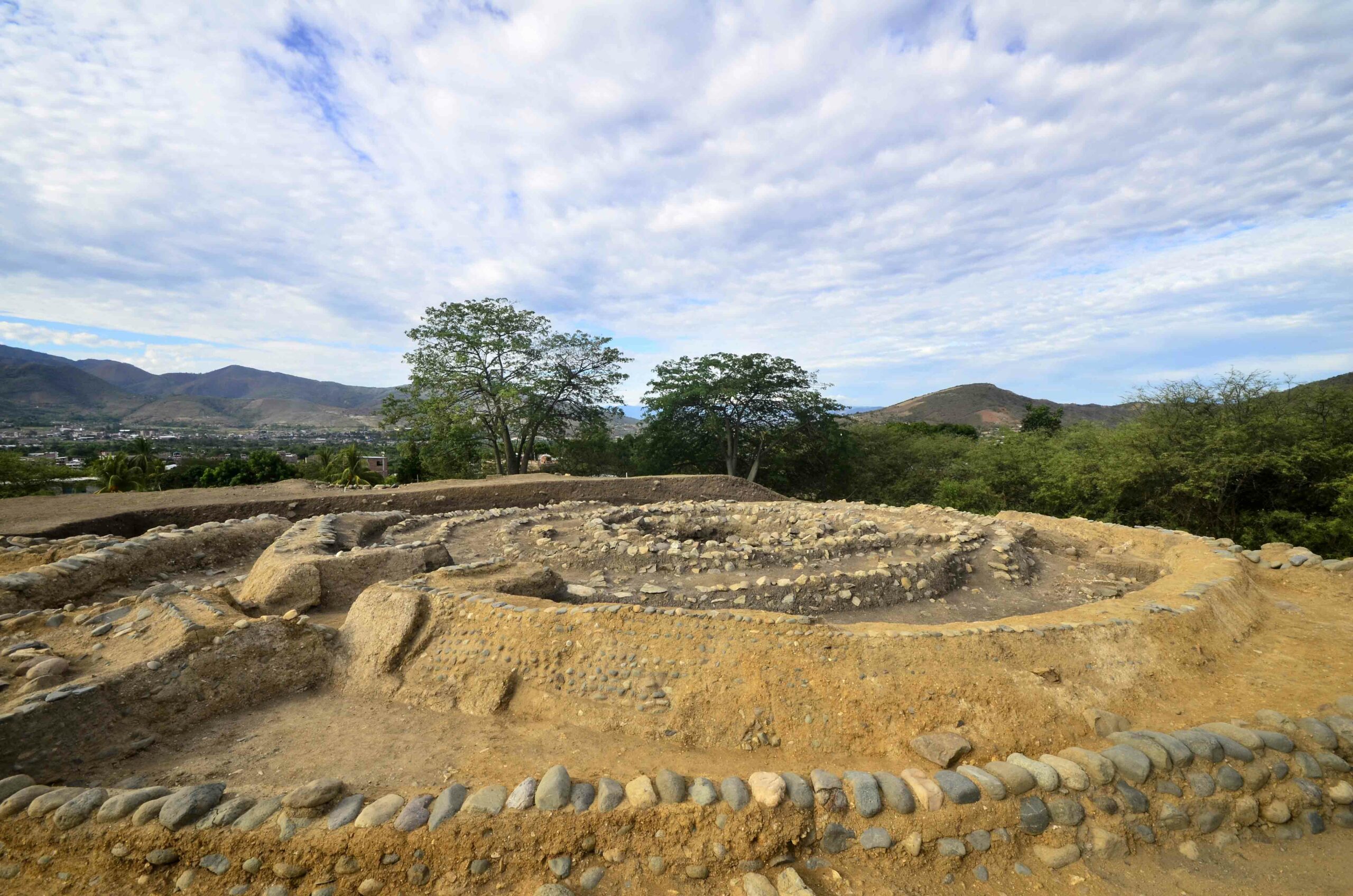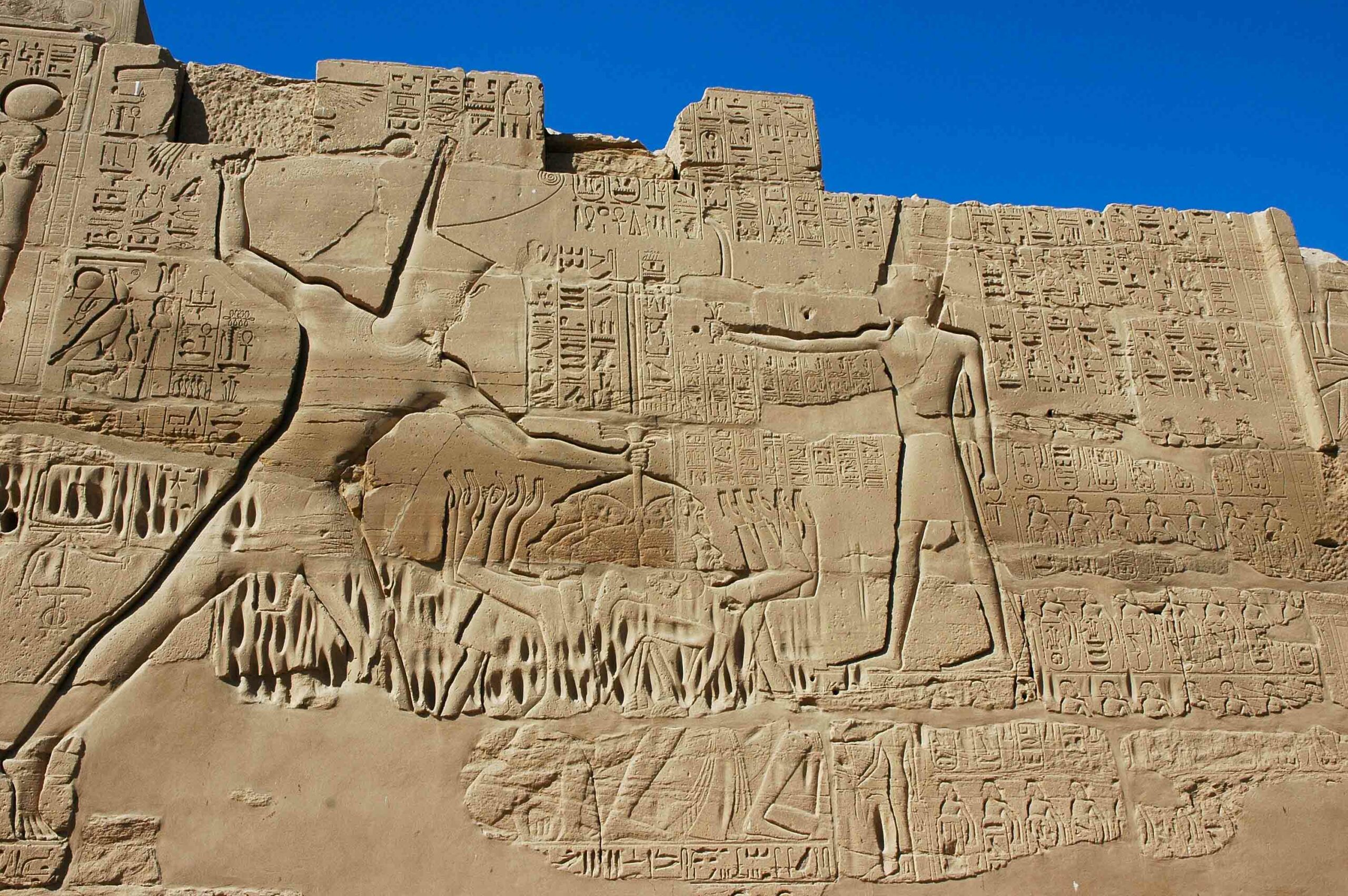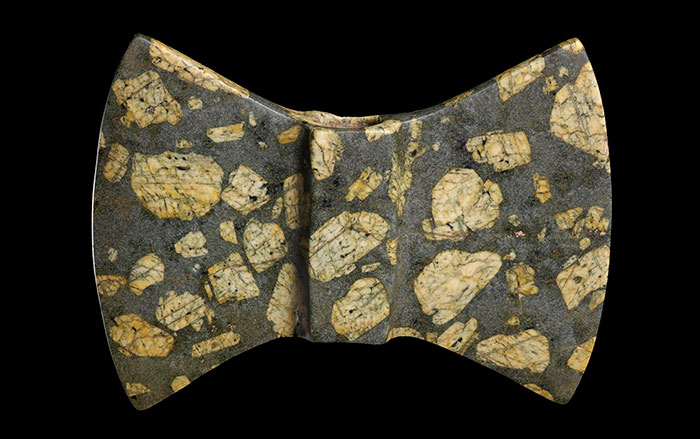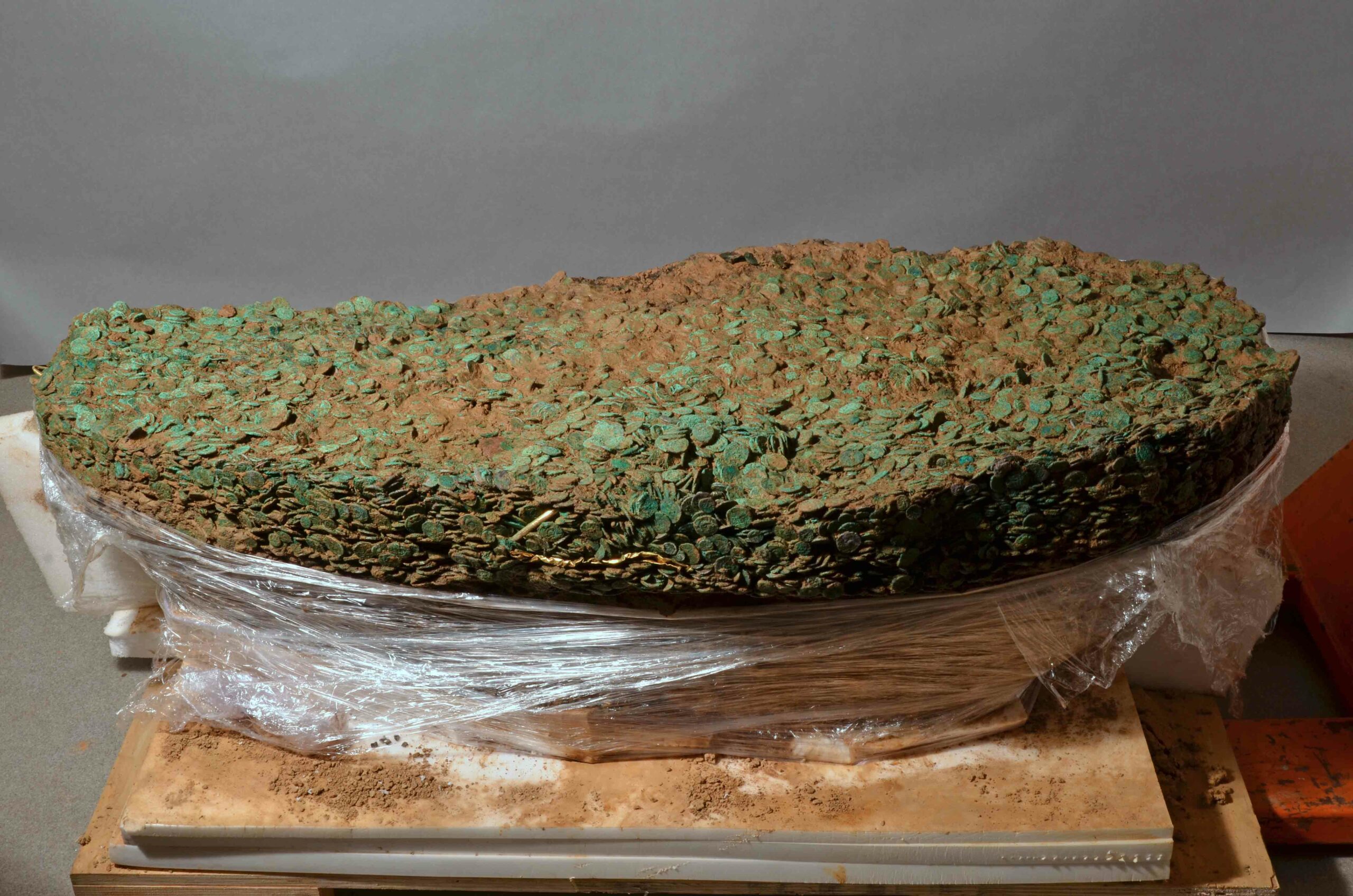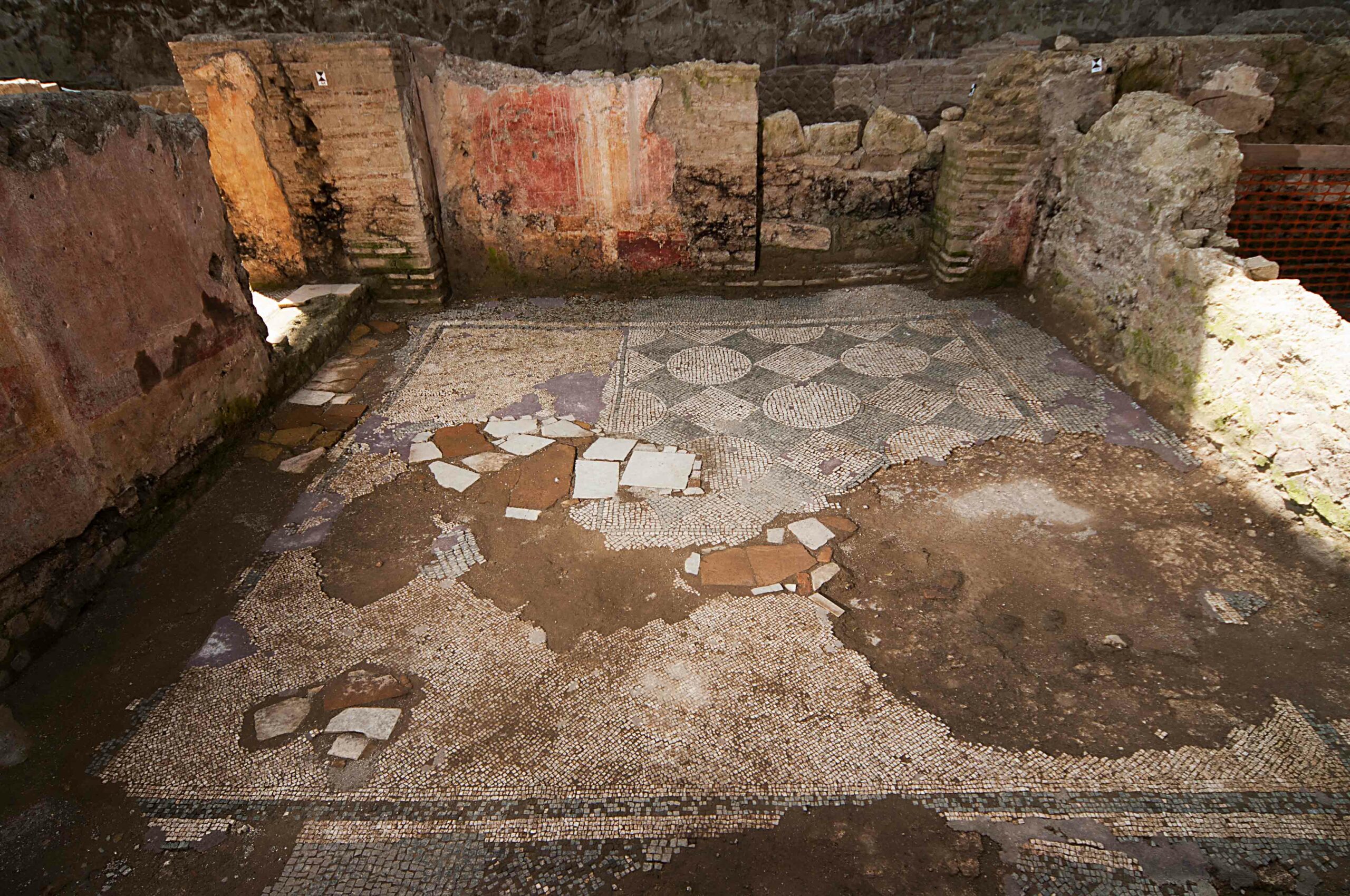The Amazon jungle wasn’t supposed to have been the site of something this big. The mound, known locally as Montegrande, spans more than two acres at its base and stands as tall as a five-story building. It sits today amid rice paddies and cow pastures outside the Peruvian city of Jaén. Although it was overgrown with bushes and taken for a natural hill by people living nearby, the few archaeologists who had ventured to this remote corner of the western Amazon basin could not ignore the fact that it bore the features of an ancient burial mound: It had steep sides and a round shape, and there are no other hills around it.
When archaeologist Quirino Olivera began excavating Montegrande (“big hill”) in 2010, he discovered that it was not only bigger, but also much older, than anyone had imagined. Once the vegetation had been cleared, he found pottery from a 1,000-year span of history near the surface. But just a few feet down, the ceramics disappeared, and Olivera began seeing evidence of architecture on an enormous scale. He uncovered sections of a long, semicircular wall, nine feet tall and coated in beige plaster, that was reached by a staircase made of boulders and packed earth. Later digging seasons, in 2012 and 2016, revealed a wide platform on the mound’s eastern side that would have faced the rising sun. The depth and form of the structure and the absence of ceramics signaled that the mound dates from the late preceramic era, some 3,000 years ago. It could only have been built by an organized, complex society with hierarchies of workers and an agricultural scheme robust enough to feed them. It would have to have been the kind of society that, according to standing theories, had not yet spread from the cool Pacific coast—where the first known cities of the Americas were already thriving—over the Andes and into the Amazon. And yet, only eight miles from the Marañón River, a large Amazon tributary, the mound conveyed a sense of permanence. Nothing this big, this old, had ever been excavated in Peru’s Amazon region. “It showed that complex worship, monumental architecture, and fixed societies had spread to the Amazon centuries earlier than once believed,” says Olivera. “The structure is saying: ‘We’re here. We live in a settled society.’” But was it the only one of its kind?
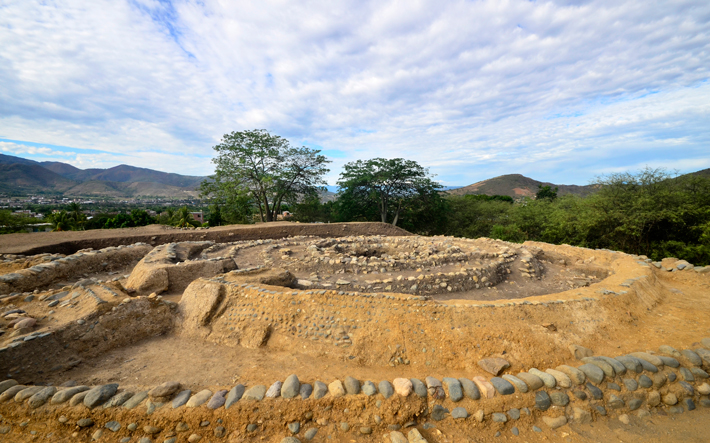
Archaeologists’ understanding of how people lived in the Amazon in ancient times has undergone a radical change in the last few decades. The old consensus was that the soil was too poor to support long-term settlement. It was thought that people moved from place to place, burning the forest and growing crops until the environment became too depleted, at which point they repeated the process. No one had found large ancient architecture in the Amazon, and its apparent absence supported the view that the area was sparsely populated and had no cities and that its people created little material culture beyond simple pottery. Spanish colonial accounts of big towns, thickly settled farmland, and flotillas of riverboats were seen as lies or exaggerations. This view, supported by research on the basin’s meager soil and mineral endowments, was promoted by the distinguished archaeologist Betty Meggers of the Smithsonian Institution, who had worked mostly in Brazil and Ecuador from the 1940s almost until her death in 2012.
Meggers’ theory of Amazonian settlement applied mainly to the humid lowlands, but archaeologists working on the forested slopes of the Amazon’s western edge, where it meets the Andes, did not find evidence that contradicted her view. In the 1970s, Peruvian archaeologist Ruth Shady Solís excavated four sites near the town of Bagua, only 30 miles east of Jaén, and identified telltale signs of small-scale farming and pottery production, but, apart from a few minor mounds, no architecture on a scale that would indicate large, sedentary populations. Another researcher, Felipe Rojas Ponce, uncovered finely carved stone bowls at Huayurco, at the forested confluence of the Chinchipe and Tabaconas Rivers, but, again, no major public structures. The Amazon was seen as “the antithesis of culture,” says Ecuadoran archaeologist Francisco Valdéz, a place where a misguided “environmental determinism held that the soil was incapable of supporting large populations.” But scientific theses are naturally subject to revision. By the time Olivera began surveying sites for excavation, the Meggers view had already begun to crumble under the weight of fresh archaeological remains, which included mammoth ancient earthworks in Bolivia and road networks in Brazil.
Over the seven years he has excavated there, Olivera has established that the Montegrande pyramid has at least eight building phases, starting from the late preceramic period in about 1000 B.C. and continuing for more than a millennium. At Huayurco, the lush riverside site about 40 miles north of Jaén where Rojas Ponce had worked in the 1960s, Yale University doctoral fellow Ryan Clasby found evidence in 2010 of uninterrupted settlement for roughly eight centuries, starting in about 800 B.C. He uncovered terraced earthworks, civic buildings, goods acquired through far-flung trade networks, and, he says, evidence of a sizeable population. They lived in Amazonian-style villages with dwellings strung out along the riverbank, not bunched into corral-like circles as in the Andes. “These were Amazon people, not migrants from somewhere else,” says Clasby. “The settlements are spaced out in linear fashion, reflecting Amazonian traditions. They were a river people.” He also found six-foot-high walls built some 1,500 years before the arrival of the Spaniards. “There is no way you can look at these structures and not see that these people had very specialized knowledge about how to handle physical space,” says Olivera, “knowledge a society develops over centuries. They weren’t going from place to place, living in grass huts, and then moving when they exhausted the soil.”
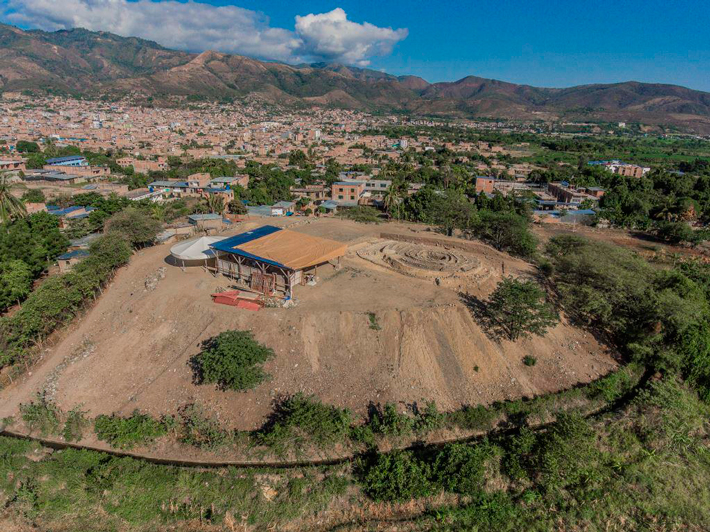
In its size and antiquity, there is much to wonder at, but Montegrande has another curious feature. Near its summit, two feet below the surface, Olivera found an arrangement of rocks in the form of a spiral, about 40 feet in diameter. The rocks coil up and around the outside of the mound like a huge snake. At its top, it suddenly coils in on itself to create a shallow depression. In that hole, Olivera found ash that he believes to be the remains of ancient ritual fires. In 2016, Olivera excavated the depression further and found, beneath the ash, a thick layer of stones that he suspects protect a tomb deep in the center of the mound.
Olivera’s first instinct, as the Montegrande coil emerged, was to interpret the feature as a giant astronomical instrument. The spiral could be seen as resembling the paths of heavenly bodies. And he noticed that the stones end in a manner that positions the tip of the coil at the spot where the sun rises from behind a distant hill at certain times of year. “The logical inference is that it was built according to an astronomical observation,” says Olivera, though determining exactly how it worked and what it measured will take more study. Only one other such spiral design has been identified in the Amazon. A few years earlier, Valdéz had found similar, but smaller, spirals at a site he named Santa Ana-La Florida, over the border in Ecuador, about 100 miles north of Jaén. He believes the spirals were part of an ancient altar.
Clasby has a different interpretation of the spirals at Montegrande and Santa Ana-La Florida. He thinks they represent visions that came from taking hallucinogens. The ritual use of psychotropic drugs in the Amazon and Andes is well known. Ancient shamans ingested plants such as vilca and San Pedro, and possibly prepared and drank ayahuasca—the first a tree whose seeds are toasted and ground into a mind-bending snuff, the second a cactus, and the third a vine that is boiled with the leaves of the chacruna shrub to make a weedy, intensely hallucinogenic brew. These substances are still in use in the Amazon today, by locals and tourists alike.
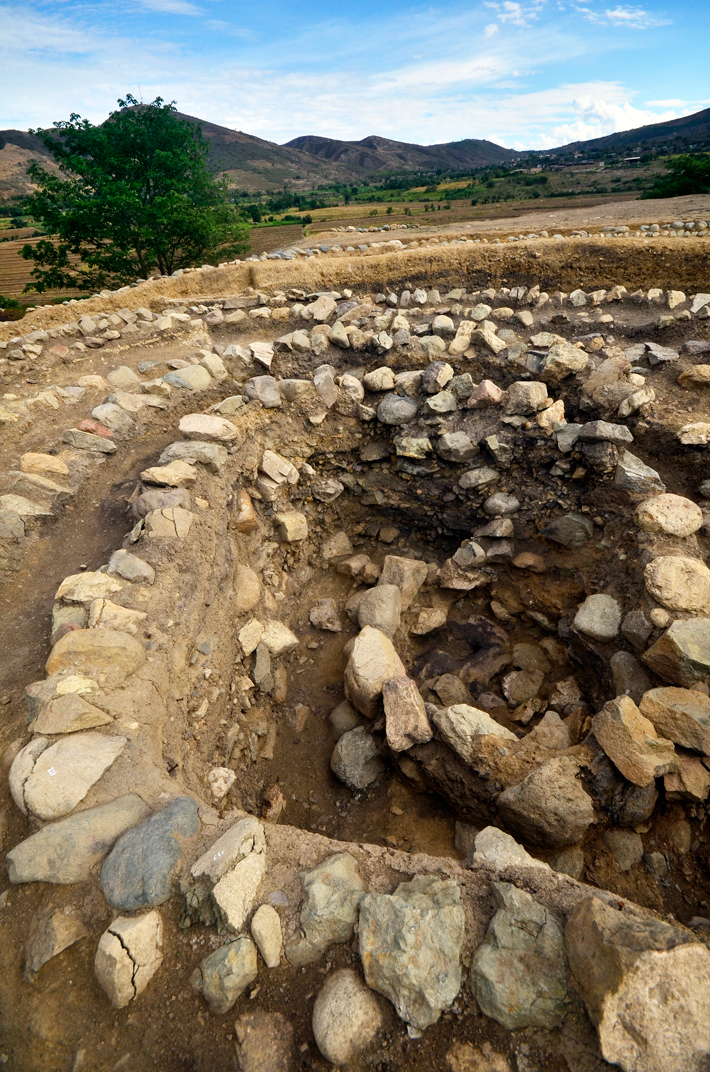
With all three drugs, partakers will usually vomit or have diarrhea or both (accounting for a common name for ayahuasca: la purga, the purgative), followed by a torrent of visions, sounds, and hallucinogenic bliss—or, in some cases, terror. A shaman may sing to the plants’ spirits to stimulate visions, but it’s primarily an inward experience through which users gain insight into some problem or illness. With ayahuasca, sometimes whole communities ingest the brew, sometimes just the shaman, though “most of the time it’s somewhere in between,” says Jeremy Narby, a Stanford-educated anthropologist who has written extensively on the modern use of hallucinogens in the Amazon. Clasby believes that any tomb beneath the center of the Montegrande coil is likely that of a priest or shaman who took one or more of these narcotics in order to tap into wisdom or see the future.
Different people see different things when they take Amazonian hallucinogens, but if there’s one common apparition, it’s spirals. “At the beginning you see flashing lights and swirls that lead into animal figures, such as coiling snakes,” says Clasby, who took ayahuasca—which is legal in Peru—with a shaman in the jungle port of Iquitos. “Hallucinogens helped inform a whole way of seeing the world, a broad cosmology that was then applied to the landscape with spirals.” They were creating, perhaps, an indelible expression of their culture. After snorting vilca seeds, the effect of which is comparable to that of LSD or mescaline, German anthropologist Christian Ratsch wrote in the 1996 Yearbook for Ethnomedicine and the Study of Consciousness, “After about five minutes I grew aware of swirling, dancing phosphenes in my visual field….The rapidly shifting array of patterns transformed itself into a chaotic current of spermatozoa. These teemed and writhed in all directions at once, giving the sensation that they were on a mission to fertilize the entire cosmos.” As part of his study, he references swirling stone carvings at yet another site, Chavín de Huántar. Chavín de Huántar dominated the northern Andes in the first millennium B.C., precisely the time when Montegrande’s spiral was created. He writes, “A panorama of flowing designs—the exact patterns depicted in the nimbus surrounding the head of the Chavín deity!” Art historian Constantino Manuel Torres of Florida International University and another researcher, Jonathan Ott, wrote in 2006 that they took vilca snuff and, four minutes later, saw “brilliantly swirling geometric patterns.”
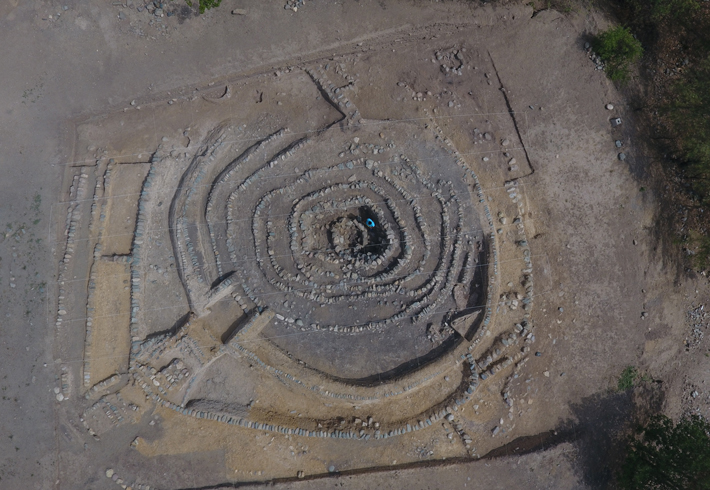
When the people of Montegrande were laying out their stone spiral, in about 1000 B.C., Chavín de Huántar was a ritual site that drew pilgrims from across the Andean realm and exercised a deep cultural influence over the whole region. Hallucinogenic imagery from the jungle was a major part of its cultural signature. Located high in the Andes, 300 miles south of Jaén, Chavín de Huántar’s sprawling network of tunnels, towers, and intricate stone carvings of supernatural animal-human hybrids survives largely intact today. Richard Burger of Yale University has studied those stone carvings in detail and documented how they depict the use of mind-altering drugs. Some carvings show a man’s face gradually morphing into a jaguar or a serpent or some phantasmagoric combination of the two, while long strips flow from the figures’ noses. Those strips represent mucus from glands inside the nose irritated by vilca snorting, Burger maintains. The bulging eyes and crazed expressions of drug users are also carved in the stone. Archaeologists have discovered ancient drug paraphernalia such as snuff spoons and mortar grinders used to mash vilca seeds at Chavín de Huántar.
The cult that thrived at Chavín de Huántar spread throughout the Andes, facilitated by drugs that came from the Amazon. Vilca is a lowland plant that must have been imported, probably along with feathers and animal skins, although almost nothing of any of these organic materials survives in the archaeological record. Researchers at Chavín de Huántar have discovered stone bowls decorated with Amazonian fish and snake motifs almost identical to those found near Jaén, clear evidence of trade ties, Burger says. The Marañón River flows as straight as a highway from Chavín de Huántar due north to Montegrande, providing an obvious trade route. Along with hallucinogens came images and symbols. The jaguars and monkeys carved in stone at Chavín de Huántar could never actually live in the frigid mountains nearby—they were exotic jungle fauna. “Chavín de Huántar was closely linked to the upper Amazon [near Jaén],” says Burger. “Chavín’s culture drew much of its religious myth and ceremony from the forested slopes of the upper Amazon.”
Burger visited the Montegrande spiral last year before Olivera was forced to rebury the site and post a 24-hour guard to protect it pending conservation work and construction of a permanent roof. The spiral is perplexing to Burger, and he isn’t sure what it signifies. “It could be related to hallucinogens, but then it might be related to other spiral phenomena such as whirlpools in rapids or the shape of various kinds of shells,” he says. The centrality of hallucinogens in early Andean worship is clear, however, he adds. As they faced a random universe, with its disease, earthquakes, and El Niño storms, drugs gave them a way to understand phenomena that went beyond ordinary comprehension. They wanted to gain power over the subconscious and use it to predict the future. “It’s likely that Chavín had an oracular function,” says Burger, “and hallucinogens may have played a role in making predictions or explaining past events.”
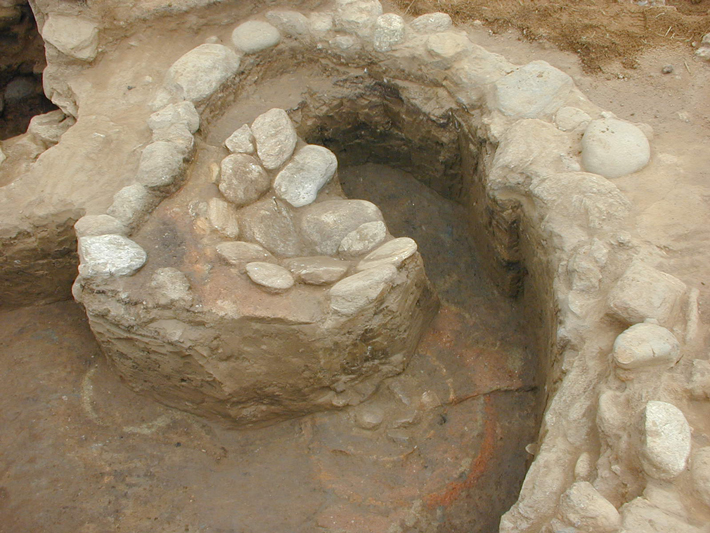
At Santa Ana-La Florida, Valdéz’s excavations have revealed a village with about 20 stone circles, each up to 40 feet in diameter, a sunken plaza, and a wide ceremonial platform on a bluff overlooking the rushing river. “It’s hardly what you’d expect of a simple settlement or even a small village,” says Valdéz. Like Huayurco and numerous other Amazonian sites, the ancient village was built at the convergence of two rivers, a place believed to possess transcendent cosmic energy. Valdéz, now at the Research Institute for Development in Paris, believes the site was a civic or ceremonial center where people from surrounding valleys gathered for rituals led by a charismatic leader. Stone spirals, smaller than those at Montegrande, coil up from the structures, like snakes ready to strike. “The logical interpretation of this spiral architecture is that it represents a sacred ideology, imbued with the notion of movement between different realms of reality,” he says. “This was expressed in rites and ceremonies during which it was common to consume hallucinogens.”
The evidence from Santa Ana-La Florida is in agreement with the emerging view of life in the ancient Amazon. People resided in fixed, well-built settlements, with imposing ceremonial centers and complex rituals that relied on visions and insights supplied by hallucinogens. They proudly traded their medicinal plants and crafts with Andean cultures. And there is proof that they stayed in one place for extended periods. Valdéz ran 32 radiocarbon dating tests on charcoal samples and found that the settlement at Santa Ana-La Florida dates as far back as 3300 B.C. Dates associated with the main ceremonial center were clustered between 2800 and 1800 B.C., which would make it older than Montegrande, and nearly as old as centers on the north-central Peruvian coast such as Caral, often called the oldest known city in the Americas.
A mile up a dirt road from Montegrande stands an even bigger and, judging from Olivera’s first excavations, potentially even older mound. Occupied today by an elderly man with chickens and barking dogs, the mound, which is known as San Isidro, was excavated by Olivera in 2010 and 2012. It held the remains of 22 children and newborns buried over a period of several centuries in the first millennium B.C. If Montegrande was the local center for shamanic ritual, San Isidro may have been where parents took sick or dying children to be cured—or sacrificed. Bones unearthed at San Isidro show signs of trauma and deformation. A newborn dating from about 800 B.C., who had been decapitated, was found entwined in the arms of a young woman, who had also been decapitated. The remains of a boy aged about six, his teeth showing signs of severe iron deficiency, were buried with guinea pigs, river crabs, and a shell necklace still around his tiny neck.
A few feet away, Olivera uncovered the remains of the mound’s resident healer or priest, his face turned toward the east, as if awaiting the rising sun. His body was adorned with some 180 snail shells, whose shapes echo that of the Montegrande spiral. Peruvian archaeologists often give names to the charismatic dead, and Olivera calls this man “The Lord of Snails.” He died around 2,800 years ago, judging from the pottery sherds buried with him, and he must have been a prominent member of his community at a time of major technological change, as the introduction of ceramics revolutionized the way people stored and carried food. In the still-earlier layers beneath his tomb, the sherds disappear, and the mound’s as-yet unexcavated history trails off into the earliest millennia of Amazonian civilization.


